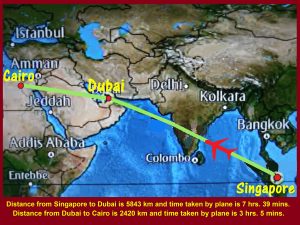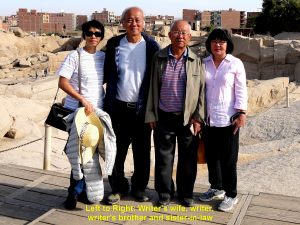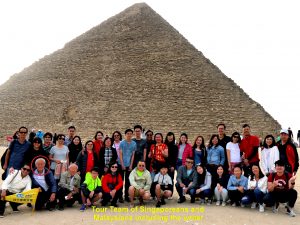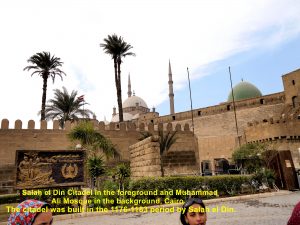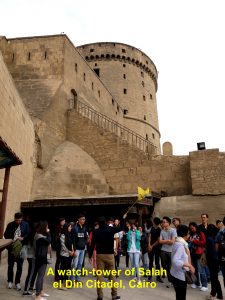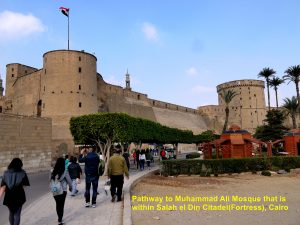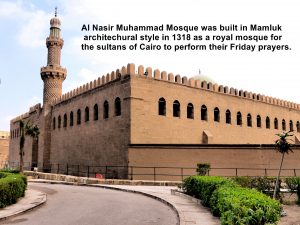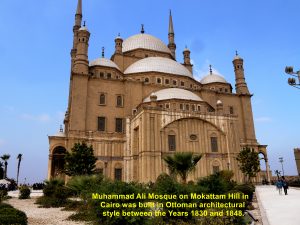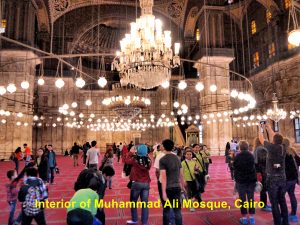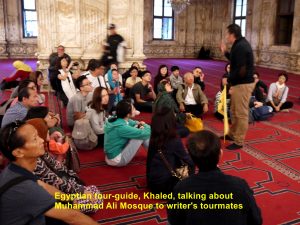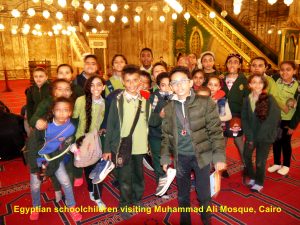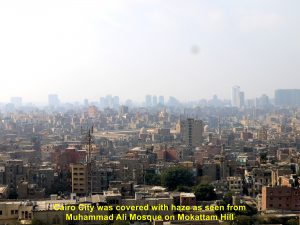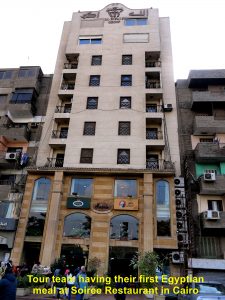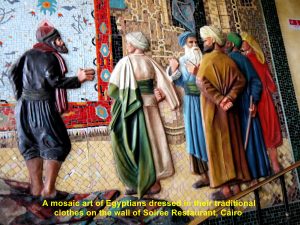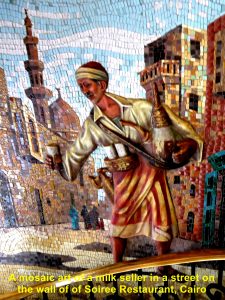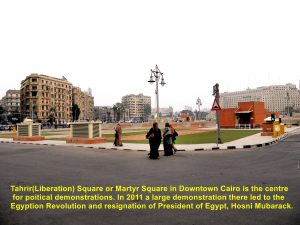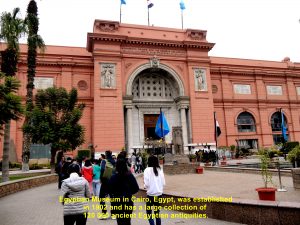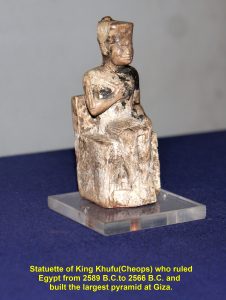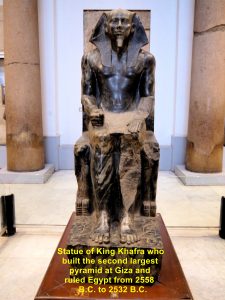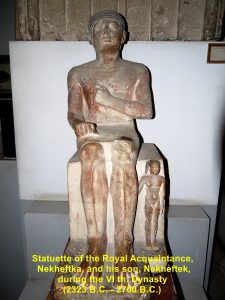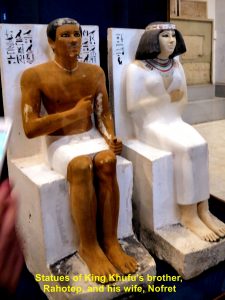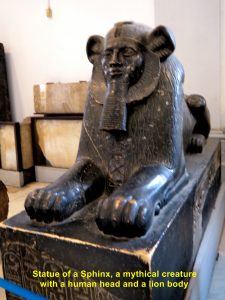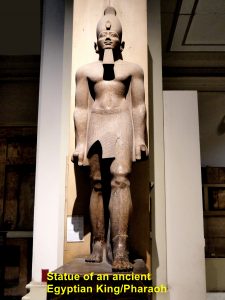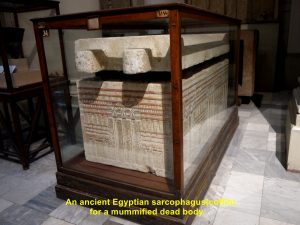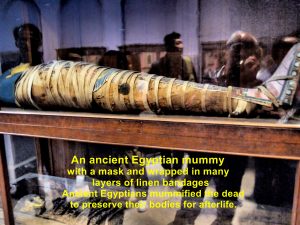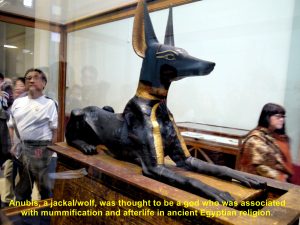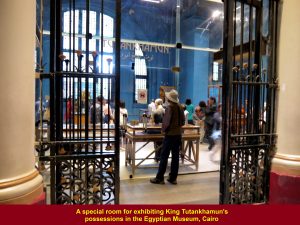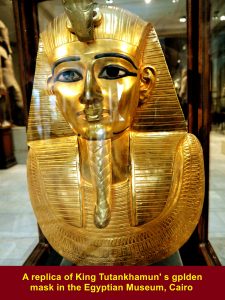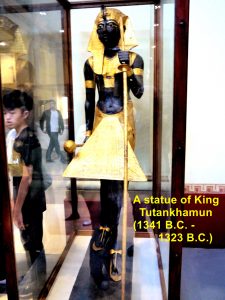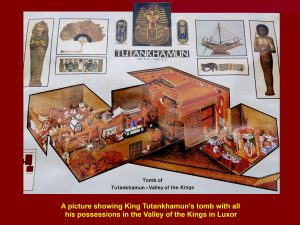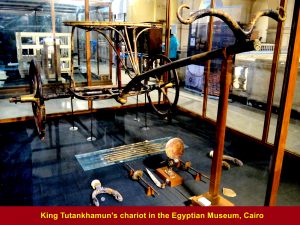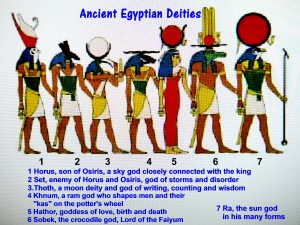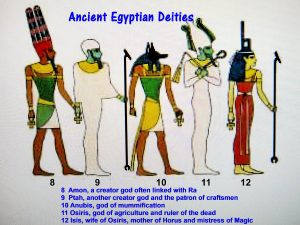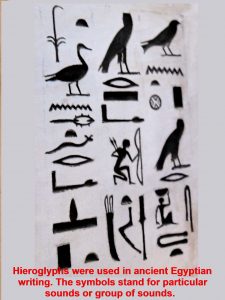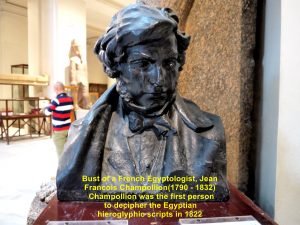Egypt Travel Part I: Salah el Din Citadel, Muhammad Ali Mosque, Tahrir Square and Egyptian Museum
Egypt Travel Part I: Salah el Din Citadel, Muhammad Ali Mosque, Tahrir Square and Egyptian Museum
Egypt
Egypt is the second country after South Africa in the continent of Africa that I visited on 13 Dec 2017. It is a country that has an interesting history dating back over 4000 years ago and it was recorded in hieroglyphic writing on tombs and walls of ruined temples.
Day 1 Wednesday 13 Dec 2017
Flying to Cairo from Singapore via Dubai
On 13 Dec 2017, my wife, brother, sister-in-law and I joined a group of 30 Singaporeans and flew on an Emirates airplane from Changi International Airport, Singapore, to Dubai and then another Emirates plane from Dubai to Cairo. The total distance was 9263 km and the flight-time taken was about 11 hours.
Arrival at Cairo International Airport, Egypt
On arrival at Cairo Airport, the tour group led by a tour manager, Yong Zheng, from Chan Brothers Travel Agency(Singapore) was welcomed by a young handsome Egyptian tour-guide, Khaled. We all boarded a coach and went straight to a famous fortress on a hill overlooking the City of Cairo. It is known as Salah el Din Citadel.
Salah el Din Citadel
Located on a low Mokattam Hill, Salah el Din Citadel was built in the period between 1176 and 1183 by Salah el Din to prevent the European crusade armies invading Cairo.
Pathway to the Fortress
To go to the fortress on the Mokattam Hill, we walked up a pathway. On the hill there are two large old mosques within the fortress, namely Al-Nasir Muhammad Mosque and Muhammad Ali Mosque or Alabaster Mosque.
Al-Nasir Muhammad Mosque
Sultan Al-Nasir, a Mamluk sultan, built a royal mosque within the fortress in 1318 and it was named after him. The sultans of Cairo performed their Friday prayers at the mosque.
Muhammad Ali Mosque or Alabaster Mosque
Within the fortress there is a larger mosque known as Muhammad Ali Mosque or Alabaster Mosque. It was built in Ottoman architectural style between 1830 and 1848 by Muhammad Ali when he came to power. He built it in memory of his deceased son.
Domes
The mosque looks impressive as it has two tall minarets, a dome in the centre surrounded by four semi-circular ones and four smaller ones in the corners. Colourful motifs can be seen in the interior of these domes.
10 000 Worshippers
Besides, the interior of the mosque is beautifully and richly decorated. Its walls and pillars are covered with alabaster, hence it is also known as Alabaster Mosque.
The mosque can accommodate about 10 000 worshippers. It has become an attraction for visitors and school-children too.
Panoramic View of Cairo City
At the back of this mosque, a visitor can see a panoramic view of the city of Cairo. On the day of our visit, we saw the city shrouded in haze due to air-pollution caused by vehicles, open-air burning and fine particles blown from Sahara Desert in the west.
Soiree Restaurant
Soon we left the fortress and went to a restaurant, Soiree, in the city for a buffet lunch. Inside the restaurant two pieces of colourful mosaic art on a wall attracted my attention. One showed a few Egyptian merchants in their traditional costumes talking among themselves and another a milkman.
Tahrir Square
After lunch we went to the Egyptian Museum. On the way we saw a public square known as Tahrir Square and was told by Khaled, the local tour-guide, that it was very important to the Egyptian people as it was a place where political demonstrations were often held.
2011 Egypt Revolution
During the 2011 Egypt Revolution, over 200 000 protesters demonstrated in Tahrir Square for 18 days resulting in the resignation of the President of Egypt, Hosni Mubarack. Mubarack who was the 4th. President of Egypt(1981-2011) was alleged to have abused his power and committed corruption. He was arrested and put on trail a few times but he was acquitted in March 2017.
Egyptian Museum
Finally, we arrived at the Egyptian Museum which was heavily guarded by soldiers. We had to go through strict security check before entering the museum. Inside the building we learned about the ancient Egyptian history dating back over 4000 years ago.
About 120 000 Exhibits
Egyptian Museum has a large collection of ancient Egyptian antiquities. About 120 000 of them are displayed on the ground floor and first floor.
Ground Floor
The ground floor has exhibits from the Archaic Period(3000 B.C.- 2700 B.C.) until the Roman and Byzantine Period(32 B.C. – 640 A.D.). The exhibits include coins, jewellery, statues, tables and coffins for mummies(scorphaguses).
First Floor
Displayed on the first floor are the artifacts from the last two dynasties of Egypt, such as those from some tombs of pharaohs in the Valley of the Kings. There are two rooms that have a few mummies of kings and other royal family members of the New Kingdom(1550 B.C. – 1077 B.C.).
Below are photos showing some of the ancient Egyptian exhibits in the museum:
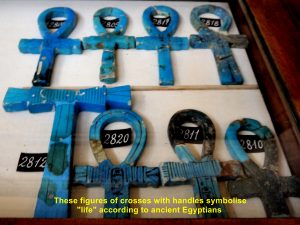
Figures with crosses and handles known as Ankhs are a symbol of life and good health in ancient Egyptian religion
King Tutankhamun
King or Pharoah Tutankhamu is the best known ancient Egyptian king in the world. It is because when his tomb was discovered in 1922 in the Valley of the Kings in Luxor, it was still intact and most of his items, over 5000 of them, were still in the tomb.
Special Room for King Tutankhamun’s Possessions
Some of the king’s objects are exhibited in a special room in the Egyptian Museum, Cairo. Unfortunately, taking photographs of his items in the room is not allowed.
Replica of Tutankhamun’s golden mask in the Egyptian Museum, Cairo
King Tutankhamun was born in 1341 B.C., became king at 9 years old in 1332, married his half-sister at 11 and passed away at 18 in 1323 B.C.. He ruled Egypt for about 10 years from 1332 B.C. until 1323 B.C..
Egyptian Deities
Ancient Egyptians worshipped many deities, as many as 114. Some of them are shown in the two pictures below.
They stopped worshipping them when Christianity and Islam spread to their homeland.
Ancient Egyptian Writing
The ancient Egyptians had a writing system that uses pictographic characters known as hieroglyphs. There are over 700 characters in the system. Some of them are shown in the picture below.
Jean Francois Champollion(1790 – 1832)
For many years no one knew how to read the hieroglyphic writing until 1822 when a Frenchman, Jean Francois Champollion(1790 – 1832 A.D.), was able to decipher it.
Rosetta Stone
There was a stone that was found near Rosetta Village(Rashid) by a French soldier in 1799. Known as Rosetta Stone, it has three kinds of writings , namely hieroglyphic at its top, demotic in the middle and Greek at the bottom. As Champollion knew the last two he deciphered the hieroglyphic writing in 1822, successfully. He found out that the hieroglyphs were phonetic representing the speech sound.
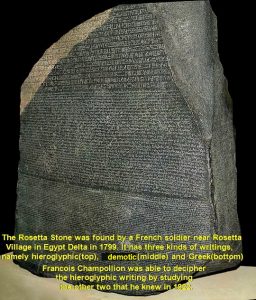
The Rosetta Stone was found in Egypt Delta in 1799 and Champollion was able to decipher the Egyptian hieroglyphic writing in 1822 inscribed on it.
Le Meridien Pyramids Hotel, Cairo
After a long day of visiting two important places in Cairo, viz. Salah el Din Citadel and Egyptian Museum, we checked in at a hotel, Le Meridien Pyramids Hotel, in the city and stayed for a night. We would be flying to Luxor for more visits on the following morning.
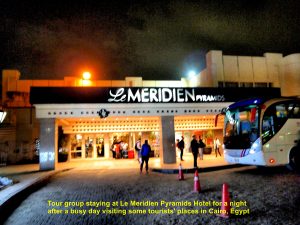
Tour group spending a night at Le Meridien Pyramids Hotel after a busy day visiting some tourists’ places in Cairo
Egypt Travel Parts I to XII:
Egypt Travel Part I :Salah el Din Citadel, Muhammad Ali Mosque, Tahrir Square and Egyptian Museum
Egypt Travel Part II :Valley of the Kings, Hatshepsut Temple and Colossi of Memnon
Egypt Travel Part III :Hot Air Balloons and Karnak Temple Complex
Egypt Travel Part IV :Papyrus Paper-Making, Luxor Temple and Esna Lock
Egypt Travel Part V :Edfu Temple, Kom Ombo Temple and Galabia Party
Egypt Travel Part VI :Abu Simbel Temples and Nubian Village(Elephantine Island)
Egypt Travel Part VII :Unfinished Obelisk, Aswan High Dam and Philae Temple
Egypt Travel Part VIII:Ahmed Hamdi Tunnel, Moon Beach(Ras Sudr), and St. Catherine
Egypt Travel Part IX :Mount Sinai, Catherine’s Monastery and Sharm el Sheikh
Egypt Travel Part X :Sharm el Sheikh
Egypt Travel Part XI :Cairo Food, Saqqara Step Pyramid Complex and Memphis
Egypt Travel Part XII :Great Giza Pyramid Complex and Khan el Khalil Bazaar
Comments
Tell me what you're thinking...
and oh, if you want a pic to show with your comment, go get a gravatar!

